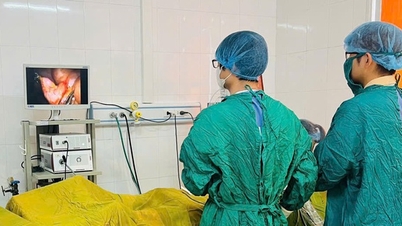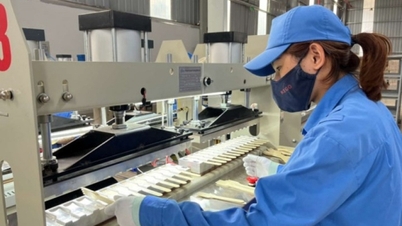What are keloid scars?
Keloid scars are bumpy scars on the skin surface due to excessive fibrous tissue growth compared to the wound and causing scarring. Specifically, when the skin is injured, fibrous tissue forms to heal the wound. However, in some people, this fibrous tissue grows excessively, forming a hard, shiny mass called a keloid scar.
Currently, there are about 100 million people in the world who have scars due to surgery or trauma, in which 15% of cases of fibrous tissue develop excessively into hypertrophic scars or keloids. Keloids can occur at any age, appear anywhere on the body but often occur in areas of the body such as: shoulders, earlobes, chest, cheeks, buttocks, ...
Keloids on the earlobes are usually round and firm, while other parts of the body will have a flatter surface. However, on some parts of the body such as the neck, abdomen, ears, etc., keloids move slightly when touched. Keloids extend beyond the boundaries of the original wound, invading the surrounding normal skin. Although keloids are not harmful to health, they make the patient lose confidence, especially in the arms, legs, etc.
Risk factors for keloid scars
Risk factors for keloid scarring include:
- People with brown or black skin: Keloids are common in people with brown or black skin.
- Having a personal or family history of keloids: Keloids can run in families, meaning if a parent has keloids, their child may have them. If a person has had one keloid, they are at risk of developing others.
- Under 30 years old: Keloids can occur at any age, however the age group of 10-30 is the stage when keloid scars are most likely to form due to stronger collagen activity.
- Pregnancy: Hormonal changes that occur during pregnancy increase the risk of keloid formation.
Can keloids be cured?

Keloids do not harm the patient's physical health but can greatly affect aesthetics.
Keloids appear as thick, irregular scars, often on the earlobes, shoulders, cheeks, or mid-chest. The skin is shiny, hairless, rough, and raised.
Size varies, depending on the size of the original wound and when the keloid stops growing.
Keloids on the earlobes are usually round and firm, while on other parts of the body they have a flatter surface. However, on some parts of the body such as the neck, abdomen, ears, and cheeks, the keloid scars move slightly when touched.
Keloid scars extend beyond the boundaries of the original wound, invading the surrounding normal skin. Although keloid scars are not harmful to health, they make the patient lose confidence, especially in the arms, legs, and face. The texture is varied, soft, hard, or flexible. Patients feel itchy, painful, and uncomfortable.
Keloids are benign (non-cancerous) tumors, however, keloids are difficult to cure completely and often grow back even after surgical removal.
There are many methods of treating keloids, patients need to see a dermatologist to choose the appropriate treatment method.
Summary: Keloids do not harm the patient's physical health, but can cause a lot of aesthetic impact and mental discomfort. Prevention or early treatment is the key to help patients achieve the highest treatment efficiency. Patients need to understand that, even when treated, keloids can still exist for many years or recur. Therefore, if you have had keloids, you should be careful when there is a wound on the skin. If surgery is required, you should consult your doctor to prevent keloids.
Currently, there are about 100 million people in the world who have scars due to surgery or trauma, in which 15% of cases of fibrous tissue develop excessively into hypertrophic scars or keloids. Keloids can occur at any age, appear anywhere on the body but often occur in areas of the body such as: shoulders, earlobes, chest, cheeks, buttocks, ...
 Do keloids go away on their own?
Do keloids go away on their own?Source: https://suckhoedoisong.vn/cac-yeu-to-nguy-co-gay-seo-loi-169251029174929259.htm






![[Photo] Closing of the 14th Conference of the 13th Party Central Committee](https://vphoto.vietnam.vn/thumb/1200x675/vietnam/resource/IMAGE/2025/11/06/1762404919012_a1-bnd-5975-5183-jpg.webp)





































































































Comment (0)